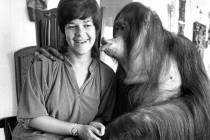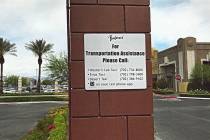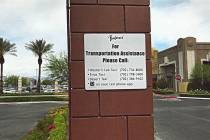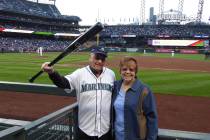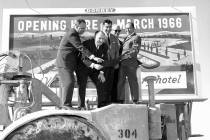Books offer peek at ‘good’ and ‘bad’ guys of Las Vegas’ past
In the musical “Wicked,” one song is about why people believe the Wizard is wonderful when he’s a fraud. “We believe all sorts of things that aren’t true. We call it ‘history,’ ” the Wizard says.
Then he belts out: “A man’s called a traitor, or liberator. A rich man’s a thief or philanthropist. Is one a crusader, or ruthless invader? It’s all in which label is able to persist.”
Two new books about Las Vegas prove the Wizard is on point.
In “Straw Men,” by former FBI agent Gary Magnesen, the federal agents are mob-fighting heroes and the late U.S. District Judge Harry Claiborne is one of the bad guys.
In “Lies Within Lies,” by Michael Vernetti, federal officials are black-hearted villains and the judge is the hero, with a few minor flaws.
The “truth” is shaped by each author’s perspective, and they’re both good reads, particularly if you are interested in Las Vegas of the 1970s and 1980s.
For me, these two books were like peeking into someone’s diary to see what they said about your friends and enemies.
Magnesen’s book is a personal account of his 26 years with the bureau investigating organized crime, first in Minneapolis, then Milwaukee, and finally in Las Vegas, until retiring in 1996.
He lived the details he shares of the intertwined relationships of mobsters in Las Vegas and the Midwest, explaining how the mob’s skimming network worked at the Stardust under the ownership of Allen Glick, front man for the mob.
Magnesen described how money skimmed from the Stardust was shuttled back to the Chicago Outfit and tells the tale of the “cookie caper,” one of the FBI’s most embarrassing moments.
For months, FBI surveillance teams watched as Stardust casino manager Bobby Stella carried a grocery bag from the casino on Tuesday afternoons, drove to a home improvement store parking lot, met Phil Ponto, another Stardust employee, and handed over the paper bag. Ponto took the bag to his apartment and on Sundays, carried it to his car trunk, and drove to church. After church, he took a circuitous route and ended up at another store parking lot and pulled up next to a car where a third man, later identified as Teamster Joe Talerico, waited for him and put the bag into his trunk.
Talerico drove to the Los Angeles Airport and flew to Chicago, where he met with mob boss Joseph Aiuppa in a restaurant. After dinner, the bag was transferred to Aiuppa’s trunk.
But seeing cash moving didn’t prove it was stolen from the casino.
The FBI decided to bug the executive booth at the Aku Aku restaurant at the Stardust, to see if they could hear Stella discussing the skim.
The order was signed by Judge Claiborne in October 1981. The device was planted. After that, not one incriminating word was heard.
Finally, the FBI decided to apply for a search warrant to seize evidence from Talerico’s car. Again, Claiborne was provided the FBI probable cause affidavit laying out the case.
When the FBI moved in on Talerico and Ponto in January 1982, Talerico’s trunk contained a box with home-baked cookies and a bottle of wine.
Magnesen suspected Claiborne might have been the tipster. Claiborne was close friends with Oscar Goodman, then the attorney for mob figure Frank Rosenthal, the man who actually ran the Stardust, and a former client of Claiborne’s as well.
Magnesen believes Claiborne sabotaged the FBI’s investigation in the instances he cites, but he offers an insider’s view, where believing isn’t the same as proving.
Vernetti’s book, addressed in Monday’s column, focuses entirely on the life of Claiborne, one of Las Vegas’ most colorful and likable characters, and concludes he wasn’t corrupt.
Not sure I agree with that last part.
Jane Ann Morrison’s column appears Monday, Thursday and Saturday. E-mail her at Jane@reviewjournal.com or call (702) 383-0275. She also blogs at lvrj.com/blogs/morrison.



